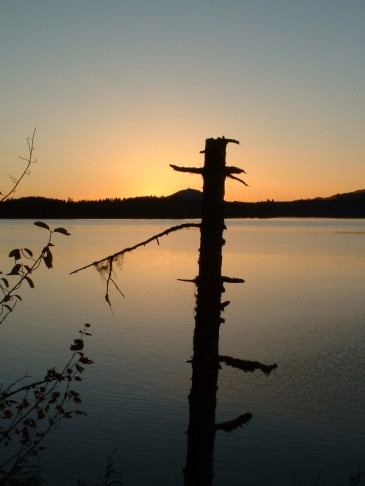I spent a week around the Olympic Peninsula of Washington state, staying in two locations, the Lake Quinault rain forest and Sequim. Not to worry, gentle reader, I shall not bore you with dozens of images of "Marge and me loading up the car. . . .Marge and me waving goodbye. . . .Marge and me stopped at a gas station. . ." etc. I will provide only a few with some vague archaeological-ish connection.
The lake itself. . .
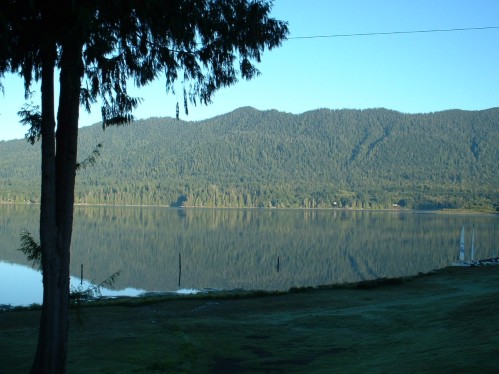
is glacial in origin, dating from the Wisconsin, created after glacial meltwater left a sediment dam (till) at the mouth of a valley. I couldn't find any depth measurements, but like most glacial lakes, it's probably pretty deep. The lake proper is also tribal-owned and the land surrounding it is Federal, so development is very limited. Consequently, not far off the roads is true wilderness. The area is well-watered (it is a rain forest after all) so the trees tend to grow quite large.
It's also prime Bigfoot hunting area. National Geographic did a program on Bigfoot and some guy was out there with loudspeakers broadcasting gorilla noises in hopes of attracting one.
I didn't see any.
Bigfoots, that is. Or Bigfeet?
There is other wildlife, however:
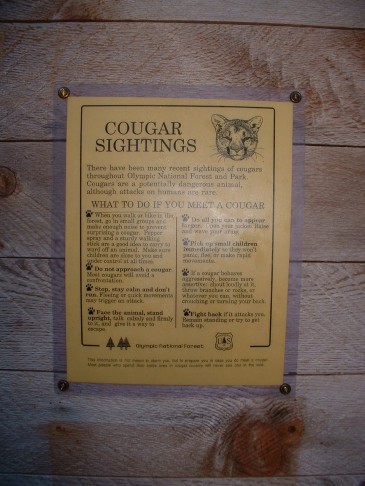
And by gummy, look what was on the trail first thing one morning:
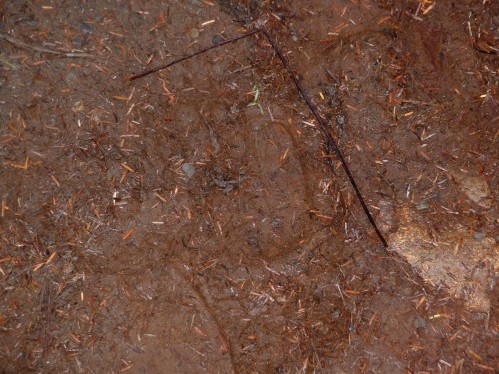
Look closely and you can just make out the pad impressions (he slipped) with two claw depressions at the end of the two middle ones. Happily, I never saw the owner.
This is one of the more moderately-sized trees (with yours truly providing scale):

Many, if not most of these things, grow on old fallen trees, since the undergrowth is so thick it prevents most seedlings from getting a start. So often you'll see them growing out of what are called nursery logs:
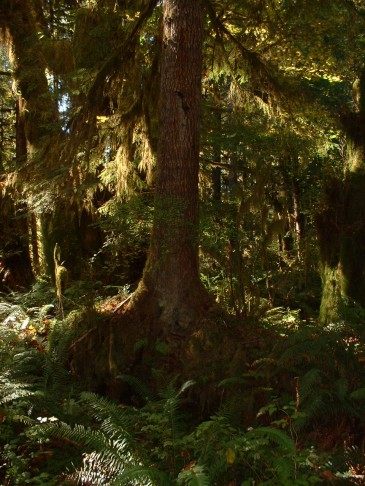
Kinda hard to make out, but you can see the roots start well above the actual ground surface. Also interesting, you will often see several trees of similar age in a straight line resulting from them all starting on a single nursery log.
One of the more fierce denizens of the forest:

Stopped here for lunch one day. Not a bad spot, eh? It's the Quinault river about 7 miles upstream from the lake. The riverbed is so wide because of the copious amounts of rain, althugh it's been dry in these parts. It's a fairly competant river at times; the tree in the bed is one of the smaller ones in that area.
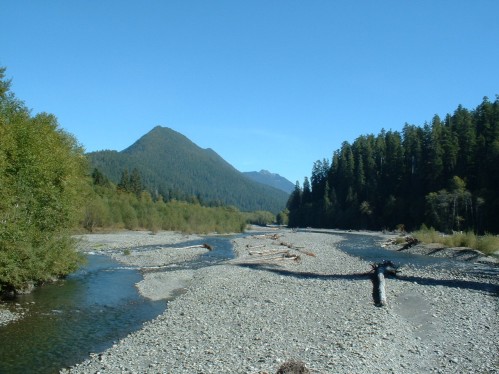
Finally, just a nice shot of a sunset:
